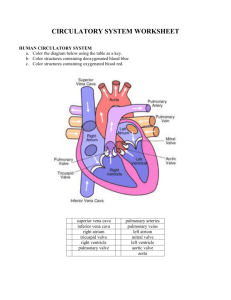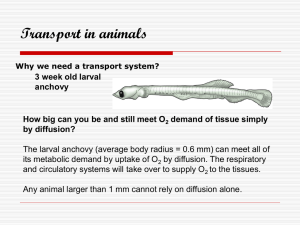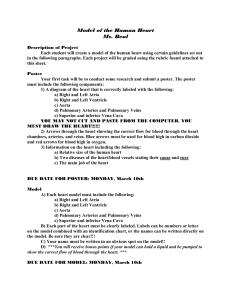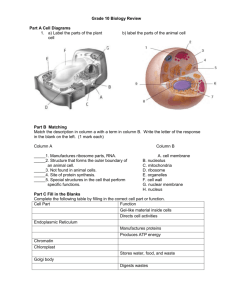CIRCULATORY SYSTEM READING
advertisement
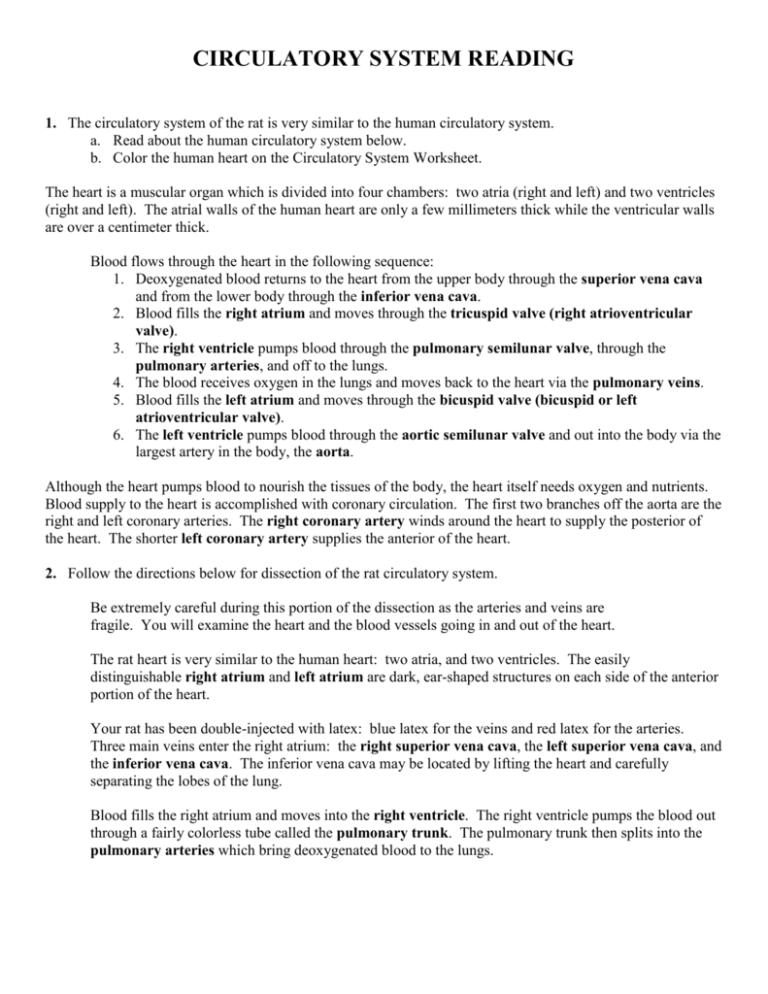
CIRCULATORY SYSTEM READING 1. The circulatory system of the rat is very similar to the human circulatory system. a. Read about the human circulatory system below. b. Color the human heart on the Circulatory System Worksheet. The heart is a muscular organ which is divided into four chambers: two atria (right and left) and two ventricles (right and left). The atrial walls of the human heart are only a few millimeters thick while the ventricular walls are over a centimeter thick. Blood flows through the heart in the following sequence: 1. Deoxygenated blood returns to the heart from the upper body through the superior vena cava and from the lower body through the inferior vena cava. 2. Blood fills the right atrium and moves through the tricuspid valve (right atrioventricular valve). 3. The right ventricle pumps blood through the pulmonary semilunar valve, through the pulmonary arteries, and off to the lungs. 4. The blood receives oxygen in the lungs and moves back to the heart via the pulmonary veins. 5. Blood fills the left atrium and moves through the bicuspid valve (bicuspid or left atrioventricular valve). 6. The left ventricle pumps blood through the aortic semilunar valve and out into the body via the largest artery in the body, the aorta. Although the heart pumps blood to nourish the tissues of the body, the heart itself needs oxygen and nutrients. Blood supply to the heart is accomplished with coronary circulation. The first two branches off the aorta are the right and left coronary arteries. The right coronary artery winds around the heart to supply the posterior of the heart. The shorter left coronary artery supplies the anterior of the heart. 2. Follow the directions below for dissection of the rat circulatory system. Be extremely careful during this portion of the dissection as the arteries and veins are fragile. You will examine the heart and the blood vessels going in and out of the heart. The rat heart is very similar to the human heart: two atria, and two ventricles. The easily distinguishable right atrium and left atrium are dark, ear-shaped structures on each side of the anterior portion of the heart. Your rat has been double-injected with latex: blue latex for the veins and red latex for the arteries. Three main veins enter the right atrium: the right superior vena cava, the left superior vena cava, and the inferior vena cava. The inferior vena cava may be located by lifting the heart and carefully separating the lobes of the lung. Blood fills the right atrium and moves into the right ventricle. The right ventricle pumps the blood out through a fairly colorless tube called the pulmonary trunk. The pulmonary trunk then splits into the pulmonary arteries which bring deoxygenated blood to the lungs. Oxygenated blood returns to the heart from the lungs via the pulmonary veins. NOTE: the pulmonary trunk, pulmonary arteries, and pulmonary veins may be difficult to trace unless you carefully lift up and remove the thymus gland. Blood fills the left atrium and moves into the left ventricle. The left ventricle pumps oxygenated blood out of the heart through the aorta. Look carefully for three arteries that branch off of the aorta: the innominate artery, the left common carotid artery, and the left subclavian artery. The left subclavian artery carries blood to the left front leg. The left common carotid artery carries blood to the left anterior portion of the head. The innominate artery soon divides into the right common carotid artery and the right subclavian artery which function similarly to the left-hand side. Once you are CERTAIN that you have identified the circulatory system structures to this point, take a closer look at the interior of the heart. Carefully cut the heart-lung complex from the rat. Note the pulmonary arteries going to the lungs and the pulmonary veins returning to the heart. Remove the lungs from the heart. Stand the heart upside down and cut down through the midline from the ventricles to the atria. Rinse the brownish, congealed blood from the ventricles. Use a stereomicroscope to observe the chambers of the heart. Note that the atrial walls differ in thickness from the ventricular walls. Identify the interventricular septum. Draw and label a diagram of the rat heart. 3. Color the rat circulatory system. 4. Complete the Checking for Understanding questions.

